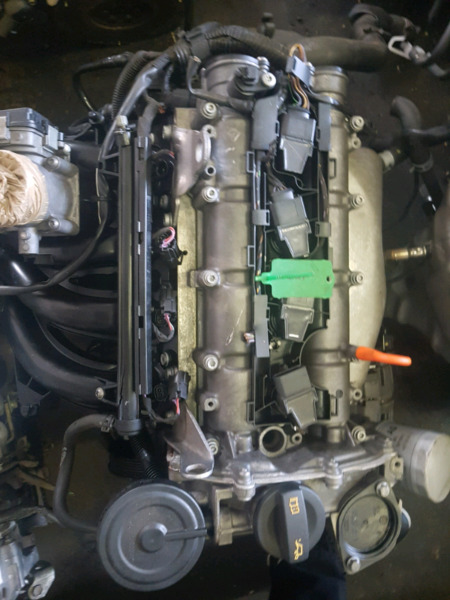Exactly How a Clp Engine Can Enhance Efficiency in Numerous Industries
The introduction of CLP engines marks a substantial change in functional effectiveness throughout different fields, driven by their capacity to optimize fuel usage and reduce downtime. Industries such as manufacturing and logistics stand to obtain considerably from their durable layout and regular power result, which assure to simplify procedures and improve performance. As organizations progressively prioritize sustainability together with effectiveness, the duty of CLP engines ends up being also much more crucial. What remains to be seen is how these advancements will shape the future landscape of commercial procedures and their influence on more comprehensive financial trends (clp engine).
Review of CLP Engines
CLP engines, or Continual Liquid Propellant engines, represent a considerable improvement in propulsion innovation, specifically for area applications. These engines use a constant feed system that allows for the continual expulsion of propellant, leading to enhanced efficiency and performance compared to typical solid or hybrid propulsion systems. By maintaining a consistent circulation of liquid propellant, CLP engines can achieve more precise drive control, which is vital for navigating spacecraft in numerous mission scenarios.
The design of CLP engines integrates sophisticated products and ingenious fuel administration systems. clp engine. This causes lowered weight and raised dependability, vital variables for long-duration space goals. Moreover, the continuous operation decreases the danger of burning instability, a typical difficulty in standard rocket engines.

Benefits in Production
The production of Continual Liquid Propellant (CLP) engines provides numerous significant advantages that enhance both performance and cost-effectiveness. One of the key advantages is the streamlined production procedure, which reduces the complexity connected with traditional propulsion systems. By making use of liquid propellant, manufacturers can accomplish higher precision in engine efficiency, leading to maximized power outcome and lowered waste.
Furthermore, CLP engines help with a greater degree of modularity, enabling for much easier integration into different manufacturing lines. This versatility can dramatically decrease lead times and boost total operational adaptability. Making use of CLP innovation likewise often tends to decrease the requirement for extensive maintenance as a result of fewer relocating components, which converts right into lowered downtime and functional costs.

Applications in Logistics
Leveraging Continuous Fluid Propellant (CLP) engines in logistics provides substantial advantages in operational effectiveness and dependability. These engines supply a robust option for different transportation needs, allowing the smooth movement of goods throughout huge ranges. The integral style of CLP engines permits for constant power output, which converts into smoother and a lot more predictable transportation schedules.
Among the vital applications of CLP engines in logistics is in durable products transportation, where they can drive both ground and aerial lorries. Their capability to maintain high performance under differing lots problems makes certain that delivery timelines are satisfied, thus boosting client complete satisfaction. In addition, CLP engines can be incorporated into automated logistics systems, facilitating real-time tracking and maximizing route planning.
In addition, the longevity of CLP engines reduces maintenance downtime, allowing logistics firms to maximize their functional abilities. This is especially valuable in warehousing operations, where efficiency in managing and moving items is essential. As logistics remains to progress, the combination of CLP engines stands for a forward-thinking method that not only enhances performance but also sustains the market's expanding demands for reliability and speed.
Impact on Power Effectiveness
Exactly How do Constant Liquid Propellant (CLP) engines improve energy efficiency in transportation? CLP engines utilize a constant circulation of liquid fuel, optimizing combustion processes and preserving a stable thrust outcome. This style decreases power losses related to conventional combustion engines, where fuel distribution can vary and result in inefficiencies.
The continual procedure of CLP engines permits for a more effective thermal cycle, causing higher certain impulse contrasted to standard engines. clp engine. This converts to decreased fuel intake for the exact same quantity of job done, substantially lowering operational expenses visit this site right here across numerous anonymous transport fields, consisting of aviation and maritime industries
Additionally, the capacity of CLP engines to preserve optimum efficiency under differing lots problems minimizes the need for constant velocity and deceleration, better boosting fuel performance. Improved power performance not only adds to set you back savings yet additionally results in lower greenhouse gas discharges, straightening with international sustainability objectives.
Future Trends and Innovations
Arising innovations in Continual Fluid Propellant (CLP) engine innovation pledge to change the landscape of transportation effectiveness and sustainability. As industries pivot towards greener options, CLP engines stand at the forefront, integrating innovative materials and design methodologies that boost efficiency while reducing ecological impact.
Among the most appealing trends is the adoption of crossbreed systems that combine CLP engines with renewable resource sources. This synergy can maximize gas intake and lower exhausts, straightening with global sustainability objectives. In addition, advancements in computational liquid dynamics (CFD) are assisting in the design of more aerodynamically efficient engines, leading to minimized drag and enhanced gas performance.
Additionally, the advancement of clever surveillance systems is established to boost operational effectiveness. These systems leverage information analytics and IoT innovation to maximize engine efficiency in real-time, ensuring that the engines run within their most effective parameters.
As study remains to explore alternate propellant formulations-- such as biofuels and artificial gas-- the future of CLP engines looks appealing. By harnessing these innovations, industries can not just boost their efficiency however additionally contribute significantly to a cleaner, more sustainable future in transportation.
Conclusion
To conclude, CLP engines stand for a substantial development in efficiency across numerous sectors. Their capacity to enhance fuel usage and minimize operational prices, incorporated with a constant feed system, boosts power output and functional reliability. The combination of sophisticated products and less relocating components lessens upkeep requirements, while placement with sustainability objectives placements CLP engines as a critical modern a fantastic read technology for the future. Continued development in this field guarantees further enhancements in effectiveness and environmental efficiency.